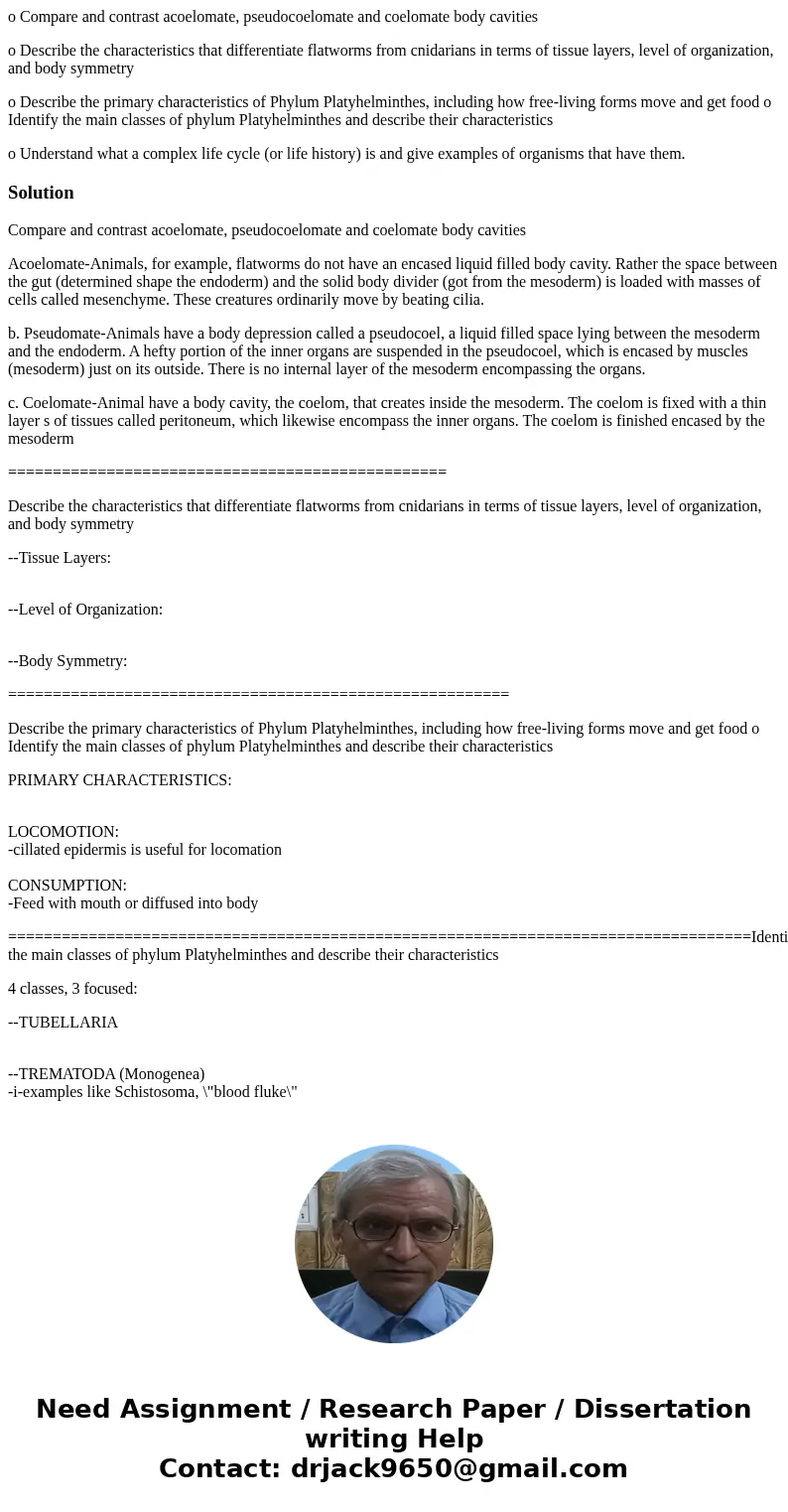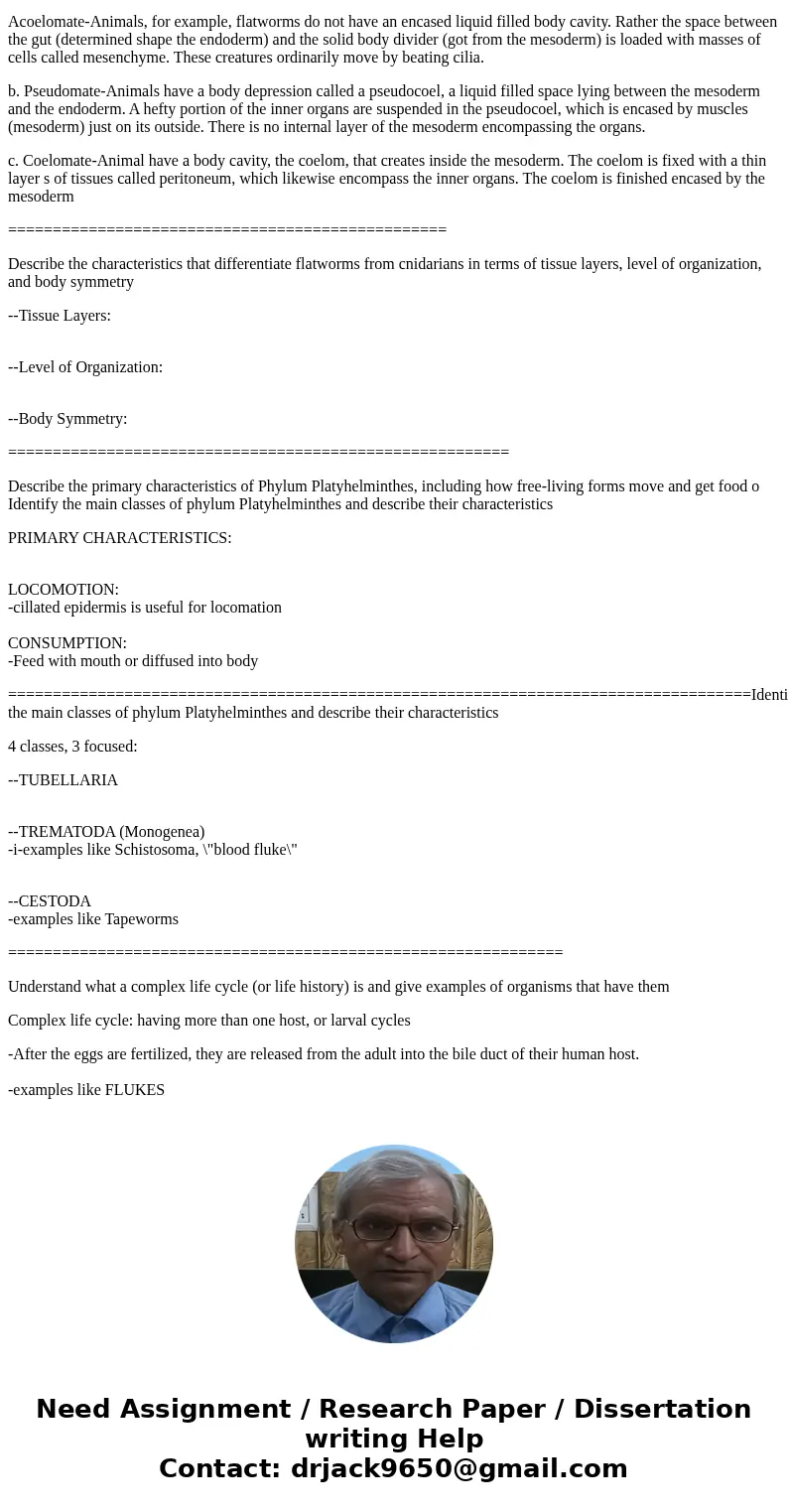o Compare and contrast acoelomate pseudocoelomate and coelom
o Compare and contrast acoelomate, pseudocoelomate and coelomate body cavities
o Describe the characteristics that differentiate flatworms from cnidarians in terms of tissue layers, level of organization, and body symmetry
o Describe the primary characteristics of Phylum Platyhelminthes, including how free-living forms move and get food o Identify the main classes of phylum Platyhelminthes and describe their characteristics
o Understand what a complex life cycle (or life history) is and give examples of organisms that have them.
Solution
Compare and contrast acoelomate, pseudocoelomate and coelomate body cavities
Acoelomate-Animals, for example, flatworms do not have an encased liquid filled body cavity. Rather the space between the gut (determined shape the endoderm) and the solid body divider (got from the mesoderm) is loaded with masses of cells called mesenchyme. These creatures ordinarily move by beating cilia.
b. Pseudomate-Animals have a body depression called a pseudocoel, a liquid filled space lying between the mesoderm and the endoderm. A hefty portion of the inner organs are suspended in the pseudocoel, which is encased by muscles (mesoderm) just on its outside. There is no internal layer of the mesoderm encompassing the organs.
c. Coelomate-Animal have a body cavity, the coelom, that creates inside the mesoderm. The coelom is fixed with a thin layer s of tissues called peritoneum, which likewise encompass the inner organs. The coelom is finished encased by the mesoderm
=================================================
Describe the characteristics that differentiate flatworms from cnidarians in terms of tissue layers, level of organization, and body symmetry
--Tissue Layers:
--Level of Organization:
--Body Symmetry:
========================================================
Describe the primary characteristics of Phylum Platyhelminthes, including how free-living forms move and get food o Identify the main classes of phylum Platyhelminthes and describe their characteristics
PRIMARY CHARACTERISTICS:
LOCOMOTION:
-cillated epidermis is useful for locomation
CONSUMPTION:
-Feed with mouth or diffused into body
===================================================================================Identify the main classes of phylum Platyhelminthes and describe their characteristics
4 classes, 3 focused:
--TUBELLARIA
--TREMATODA (Monogenea)
-i-examples like Schistosoma, \"blood fluke\"
--CESTODA
-examples like Tapeworms
==============================================================
Understand what a complex life cycle (or life history) is and give examples of organisms that have them
Complex life cycle: having more than one host, or larval cycles
-After the eggs are fertilized, they are released from the adult into the bile duct of their human host.
-examples like FLUKES


 Homework Sourse
Homework Sourse